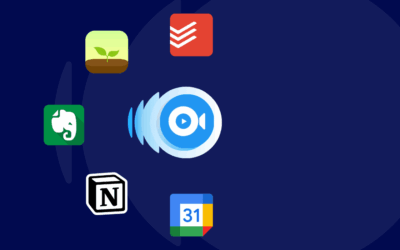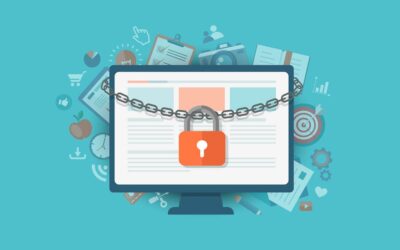Step-by-Step: Setting Up a Smart Home on a Budget

Creating a smart home doesn’t have to be expensive or complicated. With the rise of affordable technology and user-friendly devices, you can start automating your home today without breaking the bank. From controlling your lights with your voice to monitoring your front door from your phone, smart home devices are more accessible than ever. This guide will walk you through the steps to set up a smart home on a budget while keeping things practical and future-ready.
Start with a Smart Speaker or Hub
The foundation of any smart home is a central hub or voice assistant. This device allows you to control other connected gadgets through voice commands or a central app. The most budget-friendly options include Amazon Echo (with Alexa) or Google Nest Mini. These smart speakers cost less than $50 and give you access to a wide range of functions including controlling lights, setting timers, streaming music, checking the weather, and more.
Choose your ecosystem carefully—Amazon Alexa and Google Assistant are both excellent, but some devices work better within specific ecosystems. By picking one and sticking to it, you’ll ensure all your devices work seamlessly together.
Add Smart Lighting for Convenience and Savings
One of the easiest and most affordable upgrades you can make is smart lighting. Smart bulbs like those from Philips Hue, TP-Link Kasa, or Wyze are great for beginners. You can set schedules, dim the lights, and control them using your voice or phone.
Smart bulbs are energy-efficient and can help you save on electricity bills over time. For the budget-conscious, consider starting with just one or two bulbs in key areas like your bedroom or living room. Some smart bulbs don’t require a hub and connect directly to Wi-Fi, which reduces upfront costs.
Install a Smart Plug for Instant Control
Smart plugs are another cost-effective way to make traditional devices smarter. Plug one into a regular wall outlet, and anything you connect—like a lamp, fan, or coffee maker—can be controlled remotely. You can even set up schedules or timers to automate when devices turn on or off.
Brands like Gosund, TP-Link, and Amazon’s own smart plugs offer budget-friendly models that are reliable and easy to set up. These are perfect for beginners who want a taste of smart home tech without investing heavily.
Upgrade Your Home Security with Budget Smart Devices
Home security used to mean expensive installations and monthly fees. Now, with devices like the Wyze Cam, Blink Mini, or Ring Doorbell, you can get peace of mind for under $100. These devices offer motion detection, two-way audio, night vision, and cloud storage for recordings.
Start with a smart camera for your front door or entryway. Many affordable options work with Alexa or Google Assistant, and they’re easy to monitor from your smartphone. Some even offer free cloud storage, which helps you avoid subscription costs.
For added security, consider adding smart door/window sensors or a budget smart lock like Wyze Lock or August Smart Lock (basic version). These can alert you when someone opens a door or window while you’re away.
Use a Smart Thermostat to Save on Energy Bills
Smart thermostats help manage your heating and cooling efficiently, saving you money in the long run. Options like the Google Nest Thermostat or Wyze Thermostat offer basic features at a lower price than premium models but still provide app control, voice commands, and scheduling.
They learn your routines and can automatically adjust the temperature when you’re not home. Some models may even qualify for utility rebates, reducing the cost even further.
Automate with Routines and Schedules
Once you’ve set up a few smart devices, take advantage of automation features. Both Alexa and Google Home apps allow you to create “routines” that trigger multiple actions at once. For example, saying “Good Night” might turn off your lights, lower the thermostat, and lock your doors—all at once.
These routines help simplify your daily life and make your home feel truly smart. Plus, automation can save you energy by ensuring devices aren’t running when they’re not needed.
Shop Smart and Look for Deals
Setting up a smart home on a budget means being strategic about where and when you buy. Look out for sales during events like Amazon Prime Day, Black Friday, or back-to-school season. You can often find bundles of smart bulbs, plugs, or starter kits for much less than the regular price.
Refurbished or open-box devices from trusted retailers can also offer significant savings with minimal risk. Make sure they come with a warranty or return policy just in case.
Test, Expand, and Enjoy Your Smart Home
Start small, test devices, and expand slowly based on your needs. Don’t feel pressured to buy everything at once. Over time, you can add more smart bulbs, cameras, sensors, or appliances to enhance your setup.
As you grow more comfortable, you might experiment with more advanced features like voice-controlled entertainment systems, robot vacuums, or smart blinds. The key is building at your own pace without overspending.
A smart home should improve your daily life—not complicate it. By starting with the basics and choosing budget-friendly devices, you can enjoy the benefits of modern technology without the financial strain.
Conclusion
Setting up a smart home on a budget is not only possible—it’s easier than ever. With just a smart speaker, a few smart bulbs, and some plugs or cameras, you can automate your home, increase convenience, and improve security without spending a fortune. Focus on compatibility, start small, and expand based on your lifestyle and comfort level. The future is smart—and now, it’s affordable too.
















